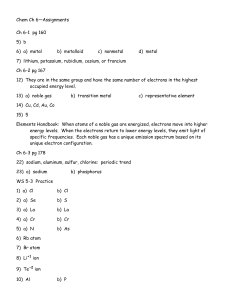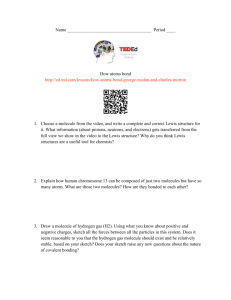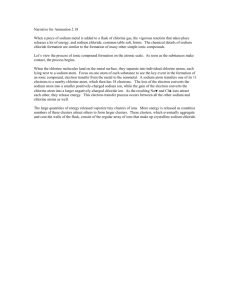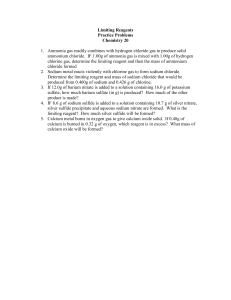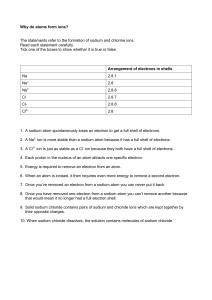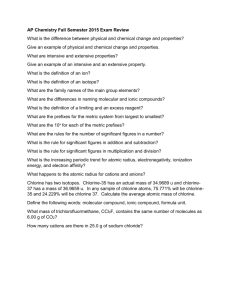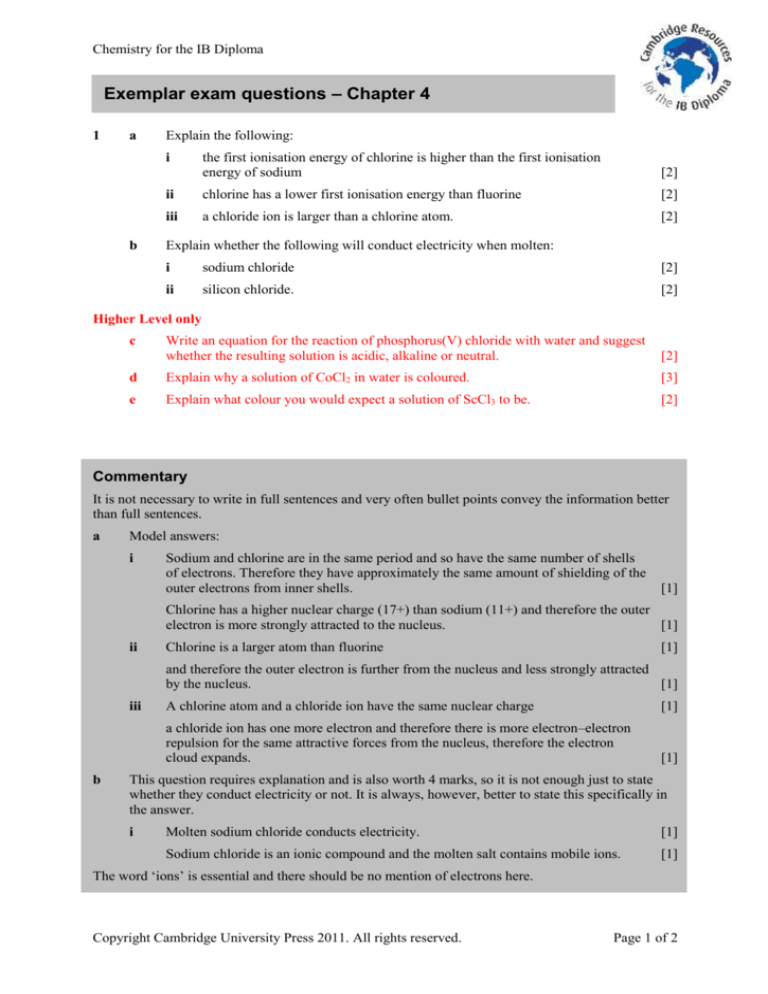
Chemistry for the IB Diploma
Exemplar exam questions – Chapter 4
1
a
Explain the following:
i
b
the first ionisation energy of chlorine is higher than the first ionisation
energy of sodium
[2]
ii
chlorine has a lower first ionisation energy than fluorine
[2]
iii
a chloride ion is larger than a chlorine atom.
[2]
Explain whether the following will conduct electricity when molten:
i
sodium chloride
[2]
ii
silicon chloride.
[2]
Higher Level only
c
Write an equation for the reaction of phosphorus(V) chloride with water and suggest
whether the resulting solution is acidic, alkaline or neutral.
[2]
d
Explain why a solution of CoCl2 in water is coloured.
[3]
e
Explain what colour you would expect a solution of ScCl3 to be.
[2]
Commentary
It is not necessary to write in full sentences and very often bullet points convey the information better
than full sentences.
a
Model answers:
i
Sodium and chlorine are in the same period and so have the same number of shells
of electrons. Therefore they have approximately the same amount of shielding of the
outer electrons from inner shells.
[1]
Chlorine has a higher nuclear charge (17+) than sodium (11+) and therefore the outer
electron is more strongly attracted to the nucleus.
[1]
ii
Chlorine is a larger atom than fluorine
[1]
and therefore the outer electron is further from the nucleus and less strongly attracted
by the nucleus.
[1]
iii
b
A chlorine atom and a chloride ion have the same nuclear charge
[1]
a chloride ion has one more electron and therefore there is more electron–electron
repulsion for the same attractive forces from the nucleus, therefore the electron
cloud expands.
[1]
This question requires explanation and is also worth 4 marks, so it is not enough just to state
whether they conduct electricity or not. It is always, however, better to state this specifically in
the answer.
i
Molten sodium chloride conducts electricity.
[1]
Sodium chloride is an ionic compound and the molten salt contains mobile ions.
[1]
The word ‘ions’ is essential and there should be no mention of electrons here.
Copyright Cambridge University Press 2011. All rights reserved.
Page 1 of 2
Chemistry for the IB Diploma
ii
Molten silicon chloride does not conduct electricity.
[1]
Silicon chloride is a covalent molecular compound and only SiCl4 molecules are present
in the liquid state – there are no mobile ions or free electrons.
[1]
c
An equation always refers to a symbol equation and not a word equation. Equations must
always be balanced. The question does not state that state symbols are required, so it is
probably better to leave them out. Generally, except for questions about energetics (where they
are essential) or they are specifically required in a question, it is better to leave state symbols
out rather than get them wrong!
Model answer:
PCl5 + 4H2O H3PO4 + 5HCl
[1]
The reaction produces phosphoric(V) acid and hydrochloric acid and therefore the resulting
solution is acidic.
[1]
d
There are several points that could be made, and it is sometimes difficult to know exactly what
the marks are to be awarded for. In these cases it is OK to write down extra points as long as
they are all correct. Any points that are incorrect are, however, likely to be penalised.
This model answer contains five relevant points. It is probably safer to write all of these down,
even though the question is only worth three marks:
Co2+ has a partially filled d subshell
in the complex ion the d orbitals are split into two groups
a certain frequency of visible light is absorbed
to promote an electron from the lower set of d orbitals to the higher set
the complementary colour is transmitted
e
Here it is important to show that you understand the principles and show the examiner that you
have all the required knowledge. Again in this answer, more points have been included as it is
not clear where the marks will be awarded.
Sc3+ has the electronic configuration 1s22s22p63s23p6 and therefore has no d electrons.
As Sc3+ does not have a partially filled d subshell, electrons cannot be promoted between d
orbitals and it cannot absorb visible light.
Therefore, ScCl3 is colourless.
Copyright Cambridge University Press 2011. All rights reserved.
Page 2 of 2


